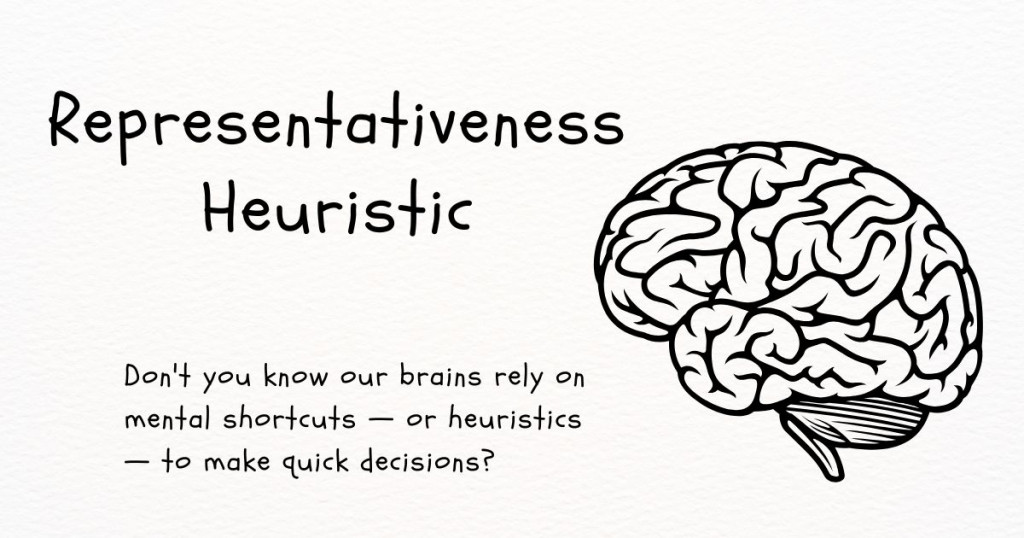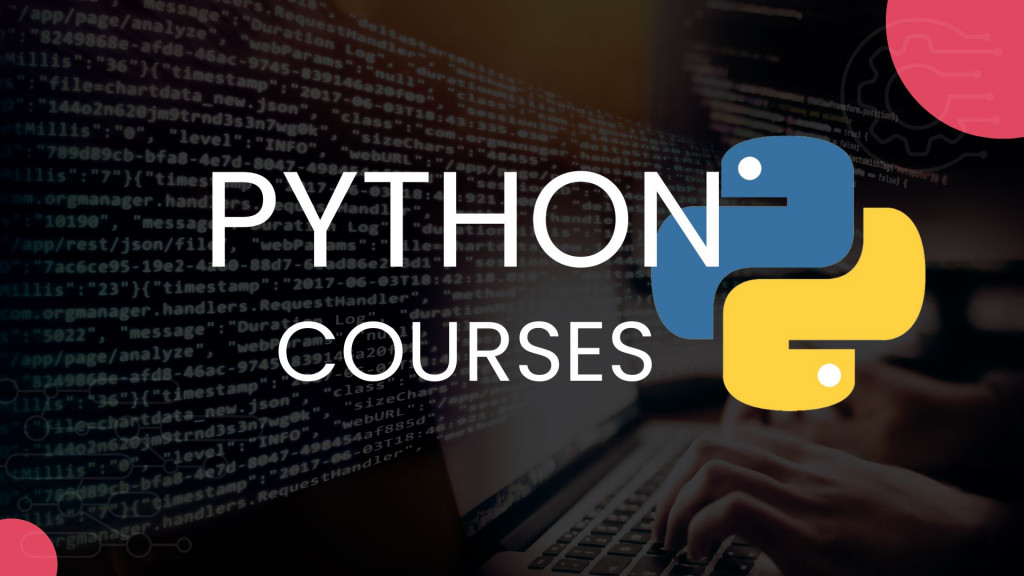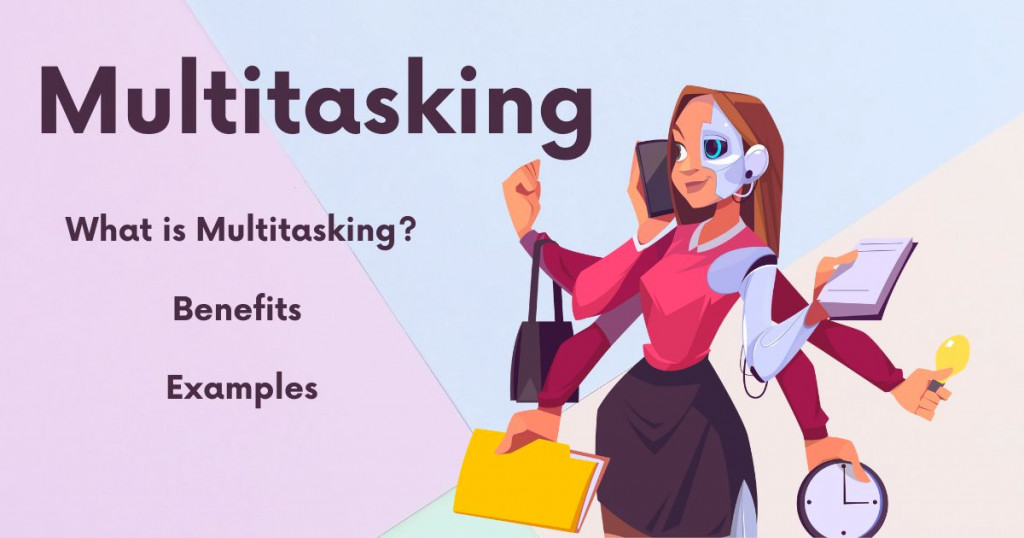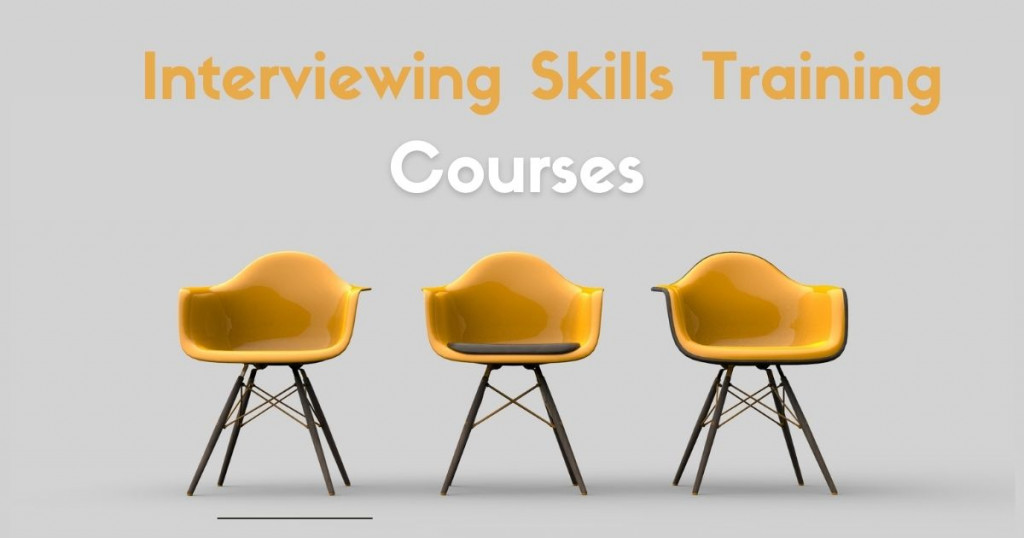What is Multitasking? Is Multitasking as Effective as You Think?
From phones, emails to social media notifications, anything can distract you from your current workflow. Even though you are trying to get as much work done as possible in your mind, every time you try to multitask, you are not solving more problems.
In fact, when you fall into a state of multitasking, you are just trying to force your brain to work at full capacity, working at a higher intensity with a lower level of work quality. That is also one of the reasons why your mental strength becomes increasingly exhausted, and your work efficiency decreases.
However, at the present time, it seems that we cannot completely eliminate multitasking, even the nature of work requires us to multitask to be able to complete it. So, what is multitasking? As well as how to multitask effectively, then each person and business can improve.
What is multitasking?

Multitasking refers to the ability to do many tasks at the same time in a certain period of time or quickly switch between different tasks. Multitasking is widely known in the context of computers playing an important part in people's lives.
With computers, multitasking refers to the ability to run more than one application at the same time. As for humans, it refers to an individual's ability to handle multiple tasks, for example, an office worker can simultaneously reply to a customer's email while taking a phone call from a business partner.
What are the three forms of multitasking?
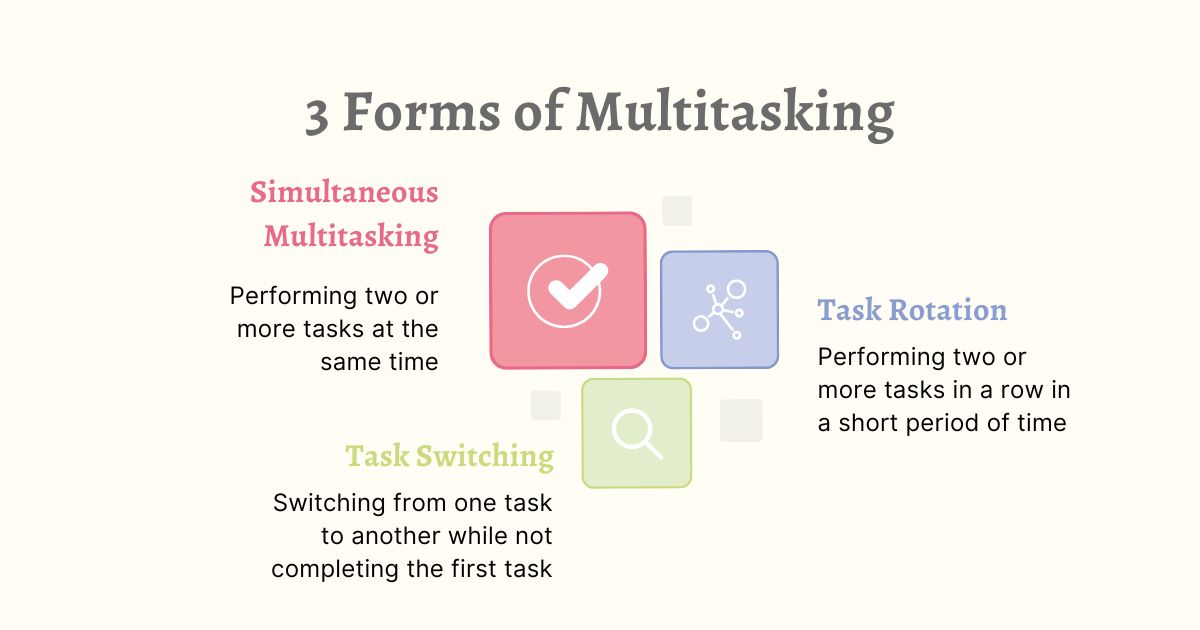
According to research by the American Psychological Association, there are a total of 3 common types of multitasking Simultaneous Multitasking, Task Switching, and Task Rotation.
Simultaneous Multitasking
Performing two or more tasks at the same time: Working while being online on Facebook or replying to customer emails while in a meeting are the most typical examples of this type of multitasking.
Task Switching
Switching from one task to another while not completing the first task: This is not a rare case when you are trying to focus on working according to plan, then an unexpected task comes up that requires you to pay all your attention to it. This is the type of multitasking that you can hardly avoid.
Task Rotation
Performing two or more tasks in a row in a short period of time: This is the third most common type of multitasking. On the surface, it may not seem like multitasking, but in reality, to optimize work efficiency, your brain needs a reasonable break before starting another task.
Advantages and disadvantages of multitasking in business
Multitasking in business has both advantages and disadvantages. It depends on the individual, the nature of the tasks, and the work environment.
What are some advantages of multitasking?

It is no coincidence that multitasking is chosen by many individuals. Many teams/businesses require employees to have this skill. Some outstanding advantages of multitasking:
Increase productivity
By multitasking, you and your employees will complete more work in the same period of time. Thereby optimizing time, ensuring work, and optimizing resources for the organization. Businesses will respond to needs faster, increasing competitiveness in the market thanks to a team of productive employees.
Reduce costs
When an employee can perform multiple tasks at the same time, the business will reduce the need to recruit new employees, saving a lot of costs. In addition, the ability of employees to take on many different roles also helps businesses be more flexible in arranging and assigning suitable personnel.
Increase flexibility for employees
You and your colleagues can easily adapt when there are changes in work or working environment, so businesses can easily adjust human resources to suit the requirements of the organization and the market.
Improve working spirit
When getting used to multitasking, employees feel more trusted and responsible because they are assigned more tasks. In addition, completing many tasks will help satisfy employees and increase motivation for everyone to complete assigned tasks well.
Develop skills
Multitaskers will have the opportunity to learn and develop more skills when performing many tasks. It is also the basis to help employees make further progress in their careers, as well as businesses build a team of highly qualified and professional employees.
What are some disadvantages of multitasking?

Although multitasking is considered to help improve work productivity, if applied incorrectly, it can be counterproductive.
Reduced efficiency and quality of work
Performing many tasks at the same time causes people's concentration to be divided into many parts, increasing the risk of missing information, making mistakes, and affecting the overall work progress. In addition, constantly switching jobs can take time to get used to, reducing work efficiency.
Multitasking causes stress
The pressure of completing a large amount of work at the same time can make people feel stressed, tired, anxious, and stressed. This situation, if prolonged, will cause health problems, affecting your quality of life and that of your employees.
Reduced creativity
When multitasking, people will have less opportunity to think and be creative due to the requirement to focus on current tasks. Not having many new ideas, solutions, and initiatives for work can make the company slow down compared to competitors, lacking the opportunity to compete in the market.
Difficulty in communication and cooperation
When having to focus too much on work, you and your colleagues will not have time to communicate and exchange with each other. This can cause misunderstandings, conflicts and affect the common work of the department and team in the long run.
Difficulty in time management
Multitasking can make it difficult for employees to arrange time for work. Without time management skills, work delays and missed deadlines are inevitable, affecting the reputation of employees as well as the progress of work and projects.
“Although switch costs may be relatively small, sometimes just a few tenths of a second per switch, they can add up to large amounts when people switch repeatedly back and forth between tasks. Thus, multitasking may seem efficient on the surface but may actually take more time in the end and involve more error. Meyer has said that even brief mental blocks created by shifting between tasks can cost as much as 40 percent of someone's productive time.”
(According to the American Psychological Association)
What is the difference between multitasking and single-tasking?
Multitasking and single-tasking are two contrasting approaches to productivity. Here's a comparison:
| Criteria | Multitask | Single task |
| Definition | Performing multiple tasks in a certain period of time. | Focus completely on a single task. |
| Benefits | – Can complete more tasks in a short time. – Saves a lot of time doing the job – The performer can easily adapt to many situations. – Supports the development of the performer's ability to concentrate. | – Increases efficiency and quality of work. – Increases creativity, has more new ideas. – Minimizes errors in the work process. – Supports improving memory. |
| Suitable for | – Simple, daily repetitive tasks. – Work that does not require too much concentration. – Work that needs to be completed in a short time. – The performer has the ability to concentrate, solve problems well. | – Work that is complex, requires high concentration. – Work that requires creativity, needs new ideas. – People who want to minimize errors and confusion when performing. |
Types of people who are most likely to fall into multitasking
The truth is that some people must multitask than others.

A study by the University of Utah found that there are 4 cases corresponding to 4 types of people who are most likely to fall into multitasking, which are:
You are aiming for a big goal in front of you: It is indeed an attractive bait that makes you try to multitask so that you can complete many things in a short time.
You do not want to do repetitive and boring tasks: You seek inspiration in your work by jumping to a new task before completing the previous one.
You think you are in the 2% of people in the world who are good at multitasking: People who think they can handle multitasking well tend to multitask more. But in fact, that may just be an illusion, making multitasking counterproductive.
You have trouble focusing: If you are easily distracted or have trouble blocking out external stimuli, unable to keep yourself in a flow state, then it is not too difficult to explain why you are easily tempted to multitask.
If you are indeed one of the 4 types of people above, do not be too disappointed. You can always improve your multitasking skills and regain 40% of your lost work efficiency.
How To Develop Your Multitasking Skills?

The first thing you need to remember is that you cannot eliminate multitasking – at least not immediately. The best thing you can do now is to choose a strategy on how to multitask best.
Arrange tasks appropriately
To multitask most effectively, you need to categorize and prioritize tasks, to find a scientific way to solve them. The Eisenhower Matrix is a useful tool for this. It allows individuals and groups to compare options, determine which tasks are urgent, and bring high value to prioritize implementation first.
Accordingly, Eisenhower divides the task list into 4 different boxes, each box represents a type of task, corresponding to the task. The best solution is to:
Urgent and important tasks, prioritize to do immediately.
Important but not urgent tasks (can be planned to do later).
Urgent but not important tasks (should be handed over to someone else).
Non-urgent, not important tasks (can be eliminated).
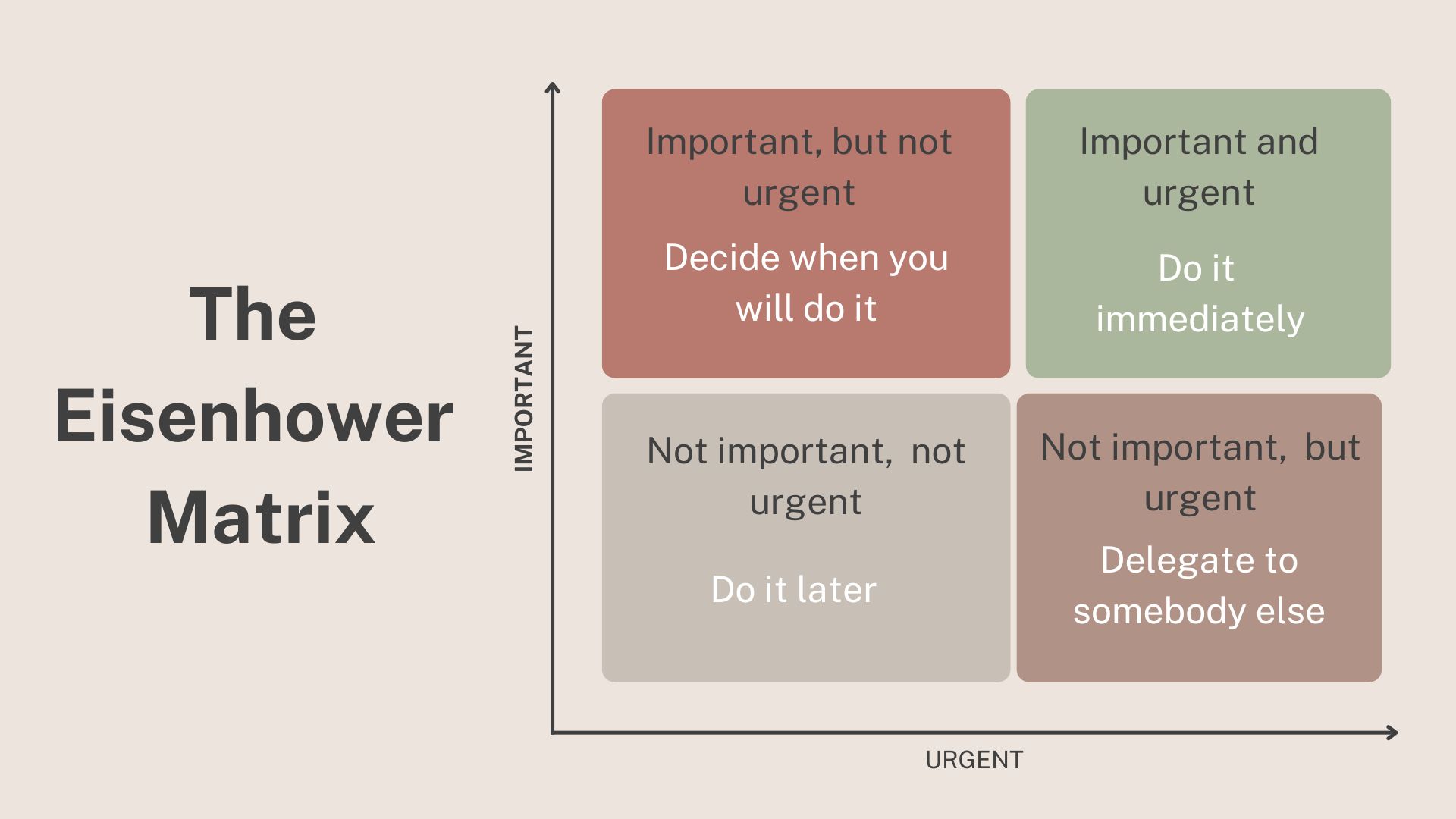
Using the Eisenhower Matrix to manage time brings many benefits to both individuals and businesses.
Single-task complex tasks, and multitask with easy tasks
Look at the tasks that need you to implement. Which task is the most difficult for you? Create a separate time and space for it to perform single tasks. And then, you can handle multitasking more easily in the remaining time, with easier tasks.
This will help reduce the cost of switching tasks, help you relieve stress when working too focused, and also create conditions for you to "enjoy" a little bit of your natural tendency to multitask.
Group similar tasks together
Grouping tasks of similar nature and similar methods to do at the same time will help save time for the performer, limiting the more complicated process. It is also a way for the brain to get used to the workflow thanks to similar operations.
For example, for those working in Marketing/Content, instead of posting 1 post on their Facebook daily, you can schedule posts for the whole week and spend time the next day doing other tasks.
Work at the right pace
When doing many tasks at the same time, employees can fall into a state of urgency. This is the factor that causes stress and errors at work.
The advice is not to rush yourself and your employees too much (if you are a manager). Keep the workflow at a steady pace, divide tasks into small time periods, and set deadlines for each task to complete.
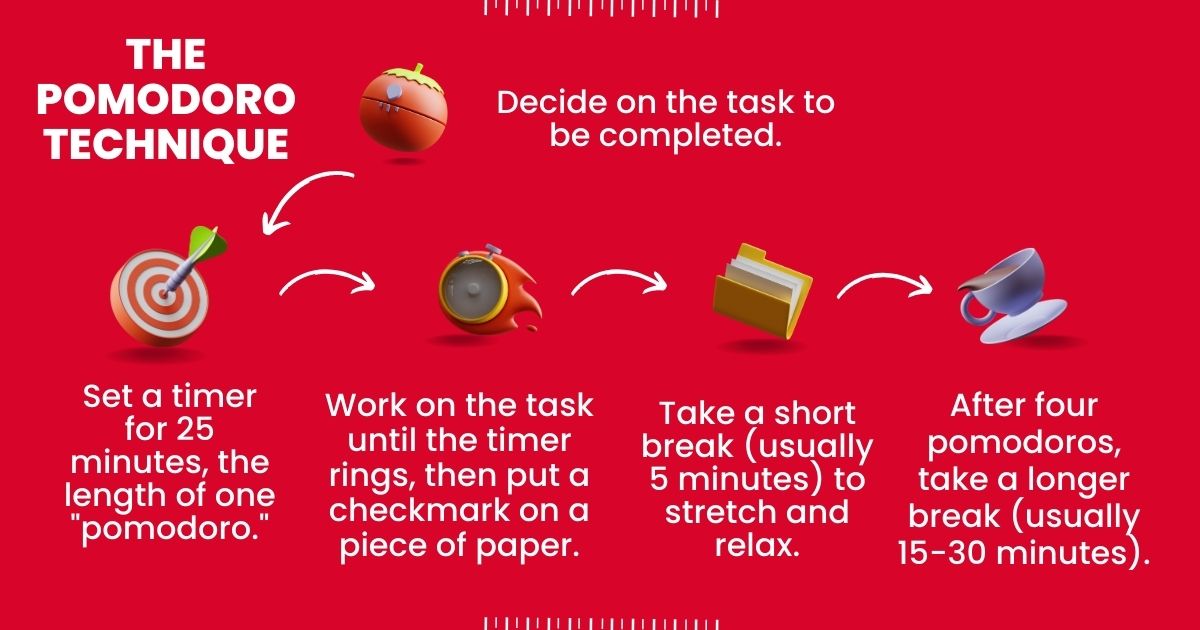
Pomodoro is a famous time management technique that can reduce the disadvantages of multitasking with a fairly simple principle:
Work focused for 25 minutes, then rest for 5 minutes. After repeating the above cycle 4 times, take a longer break (about 15-30 minutes)
In every 25 minutes of work, focus on only 1 task. If you are forced to interrupt, it will be counted again from the beginning.
If the work is finished before the Pomodoro ends, you need to use the remaining time to check and optimize the work until the end of that Pomodoro.
During breaks, you need to really rest, to avoid making your brain more tired.
Work scientifically
To limit the harmful effects of multitasking and form good work habits, start with the following:
Create a clear schedule and set aside a certain amount of time for priority tasks
This is the easiest step to limit multitasking. When starting a new day or a new week, list the tasks that need to be done in a reasonable priority order.
Set aside a certain amount of time for tasks that require high concentration and try to stick to the time outlined.
Some applications that help you focus better are Forest or Habit List. In addition, Google Calendar can also "remind" you to avoid not following your pre-set schedule.
Limit the frequency of "checking" communication channels
Notifications from emails, messages, or even from colleagues will pull us out of the workflow. However, sometimes it is necessary and unavoidable. So, between responding to communication channels and current work, choose one priority and complete it first.
Another way that can be applied is to set a time for communication activities. For office workers, a reasonable time for this activity can be at the beginning of the day or early afternoon.
Is Multitasking Really Effective?

In the age of information technology, multitasking is even easier when you can use your phone to compose emails while walking or read the news while meeting. At first, it seems like we are getting a lot done thanks to multitasking.
However, it is necessary to review whether this is an effective way of working.
Multitasking makes simple tasks difficult
A study by Bryan University has shown that doing many things at the same time can make people take longer to do simple tasks.
Your IQ (intelligence quotient) can drop by up to 15 points and work performance can decrease by up to 40%. If this happens for a long time, it can also affect emotional intelligence and reduce gray matter in the brain.
Remember that you need to have a continuous flow of work to be productive. And this only happens if you focus on one thing and have a clear flow of thought.
Multitasking reduces short-term memory and hinders creativity
When the brain is too distracted by external activities, you will gradually lose the ability to form short-term memory (the ability to help you remember and process information immediately).
In addition, a lack of concentration for a long time will cause people to lose motivation and creativity. When you don't spend much time focusing on a problem, your brain will be "lazy" or "superficially" active. As a result, you can't come up with new, quality ideas.
Multitasking exhausts the brain
Working without a break or constantly switching between tasks can cause the brain to lack oxygen and lose energy. In the long run, this can make you as stressed as losing sleep.
Reports show that taking a 15-minute break after a few hours of work will help you work more effectively.
However, during the break, your brain must be relaxed by walking, watching the clouds, listening to music, reading a book, etc. Browsing social networks is definitely not one of them.
But don't take breaks too often. With challenging tasks, you have to focus for at least 25 minutes to two hours to start creating efficiency.
Some courses that Skilltrans would like to introduce to improve your multitasking ability. Please click on the course name below to learn more:
The Ultimate Productivity and Time Management Course 2025
Effective Time Management & Personal Productivity from a multi 6 figure entrepreneur, Joshua George.
Do you often feel stressed and overwhelmed?
Are you sick and tired of always falling short of your goals?
Do you often feel like there aren’t enough hours in the day?
If you said, yes to any of those questions, you are NOT alone
And the instructor is there to tell you, it doesn’t have to be this way.
Time Management: The Art of Mastering Time
Start your transformative journey with our "Time Mastery" course, where you'll discover practical and easy-to-implement strategies to make the most of every moment in your day, strike a harmonious balance between work and personal life, and gain control over your time, ultimately leading to enhanced productivity, reduced stress, and a pathway to success in both your professional and personal pursuits.
Designed for individuals from all walks of life, this course introduces you to the art of effective time management without overwhelming jargon or complex theories, focusing on real-world scenarios and relatable examples. Learn to create a personalized daily routine that aligns with your goals, conquer procrastination, and master stress management techniques.
Focus and Attention Mastery | Premium Hyperfocus Training
Understand the concept of hyperfocus and its benefits for productivity and overall well-being. Learn how to identify and leverage hyperfocus in daily tasks.
Develop strategies to minimize distractions and increase focus on important tasks, leading to improved time management and efficiency.
Learn techniques to enhance cognitive control and overcome procrastination, including practical exercises and habit-building strategies.
Explore the connection between mindfulness practices and hyperfocus, cultivating a more mindful approach to work and life.
Conclusion
Multitasking brings many benefits such as increasing employee productivity, saving time, and reducing costs for businesses. However, if applied ineffectively, it can lead to negative effects, reducing the quality of work. Businesses can refer to and apply some ways of multitasking in the article, to build a team of employees who work productively and effectively, helping the organization to develop more and more.
If you want to make the most of multitasking, you can sign up for Skilltrans courses.

Meet Hoang Duyen, an experienced SEO Specialist with a proven track record in driving organic growth and boosting online visibility. She has honed her skills in keyword research, on-page optimization, and technical SEO. Her expertise lies in crafting data-driven strategies that not only improve search engine rankings but also deliver tangible results for businesses.
